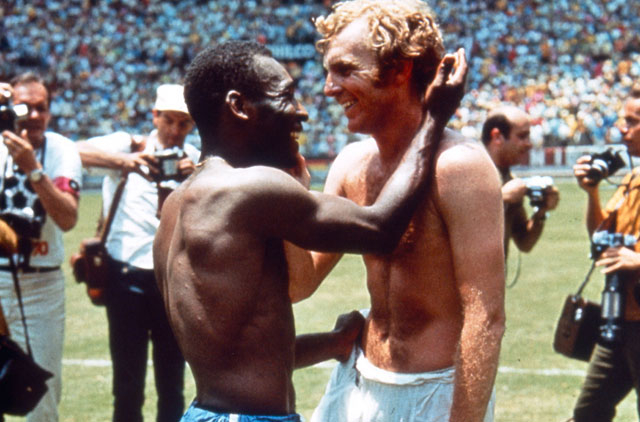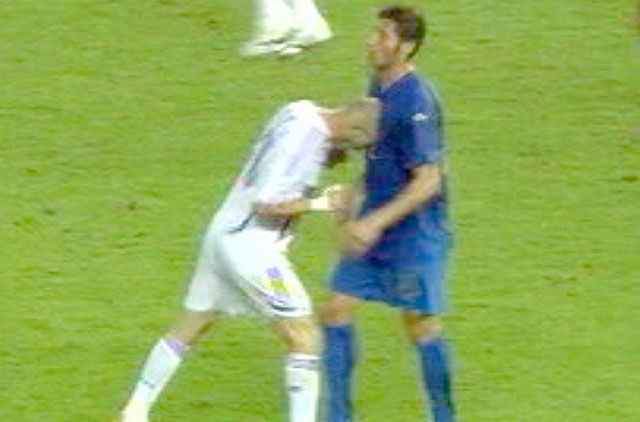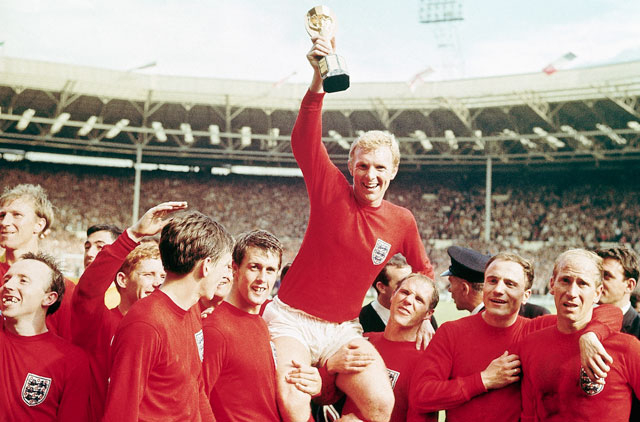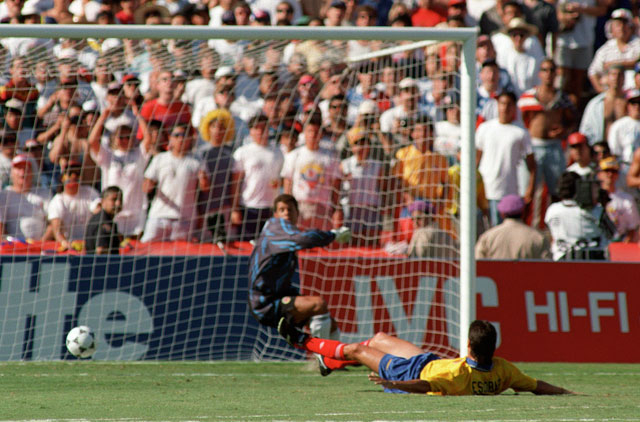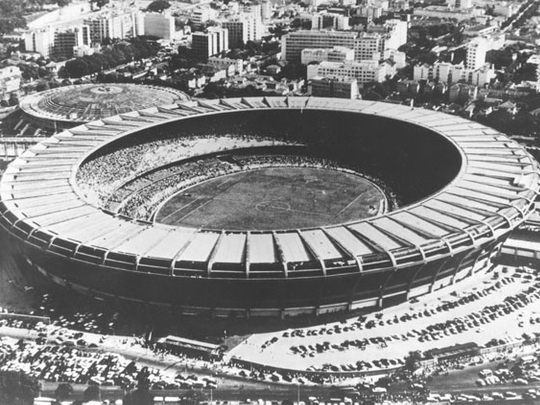
The World Cup is as much about great stories as great football. With a click, those stories become an indelible part of the footballing zeitgeist for eternity.
But how does a photographer create that enduring image? Being in the right place at the right time matters most of all. “What makes the best sports photo are the format, the emotion and the journalistic importance of the moment,” says Devadasan K.P., Picture Editor at Gulf News.
“A good sports picture should capture the action of the moment as well as the subject’s face. It should be shot as tight to the action as possible while maintaining a sharp focus on the ball or other sport objects in the frame. A narrow depth of field isolates the subjects and properly exposes and lights the image,” he says.
And when it comes to the final cut, to the decision on what picture gets published, editors can be very picky indeed. A blurry screen grab of Zinedine Zidane headbutting Marco Materazzi is more likely to be published than a clear photo showing the aftermath.
“It’s not that composition doesn’t have a role to play, but often it’s purely accidental rather than the photographer’s choice that makes a picture magical,” says Gautam Bhattacharyya, our newspaper’s Sports Editor. A very good example of this is the famous AFP photographer’s shot of Usain Bolt running with lightning striking the night sky in the backdrop.”
The fateful Maracanazo
Brazil vs Uruguay, World Cup Final, Rio, Brazil, 1950
Constructed in the heart of Rio especially for the 1950 World Cup, the image of the stadium has great relevance today given the saga surrounding the construction of stadiums for 2014. The favelas just out of shot show not much has changed regarding the poor-rich dichotomy still crippling Brazil. With more than 200,000 spectators crammed into one of the world’s biggest stadiums, it’s the highest-ever attended football match in the history of the sport.
This match came to be known as the dreaded Maracanazo — the final game of the 1950 tournament that saw Brazil lose after Alcides Ghiggia’s late goal. This was the fateful day that Brazil decided to ditch the cursed white-and-blue playing shirts for the iconic yellow-and-green.
DK: “The aerial picture captures the sheer size of the Maracana — complete with crowd — and dwarfs the surrounding buildings. The final game of the 1950 event remains the most famous football match ever played on Brazilian soil. A superb angle capturing the mood in Rio de Janeiro.”
GB: “An invaluable piece of documentation. The Maracana, revamped at a huge cost for the 2014 World Cup, may look more state-of-the-art now but old timers say it has lost its soul.”
The shirt swap
Brazil vs England, Group 3 fixture, Guadalajara, Mexico, 1970
From the retiring English king to the Brazilian heir, with love. The culture-crossing camaraderie of two of the world’s best footballers appreciating each other is one of the rarest moments in sport.
Pele said of the moment: “He was my friend as well as the greatest defender I ever played against. The shirt he wore in that match is my prize possession.”
DK: “A defining image taken by John Varley shows Bobby Moore and Pele swapping shirts following England’s defeat at the hands of Brazil. This picture was quoted as being Bobby Moore’s ‘favourite photo’ — the then world champions effectively handing over the baton of world supremacy to the champions-elect and the world’s greatest player.”
GB: “The image sums up why English fans still have a romantic notion of Moore as their most sporting captain ever. It was a gesture that possibly helped ease some of Pele’s bitterness after the rough treatment he received at the hands of several defenders in an unsuccessful 1966 campaign.”
A final act of madness
France vs Italy, World Cup Final, Berlin, Germany 2006
Egregious and insane. Zidane’s red card for head-butting Italian defender Marco Materazzi in the chest is possibly the most infamous image of modern football. The French genius threw it all away because of a literal rush of blood to the head.
DK: “This is the defining image of Zidane’s career because it happened on the biggest stage in the biggest moment. Photographer Peter Schols makes the picture inquisitive and surprising. The picture demands your attention due to the action, the position from where it was made, the format, the emotion and the importance of the moment.”
GB: “It will surely stand out as one of the most intriguing frames in the history of World Cup — something later immortalised as a work of sculpture. The incident is a blot in Zidane’s career, but the last has not quite been heard regarding the exact words of provocation from Materazzi.
“If capturing the exact moment is the key, it’s difficult to beat Zidane’s headbutt. It’s not the best example of clarity but ranks as one of the most historic photographs of the World Cup.”
Moore team spirit
England vs West Germany, World Cup Final, London, England, 1966
The quintessence of Captain Fantastic. Jules Rimet in hand, Bobby Moore is hoisted up on the shoulders of the players he led to World Cup victory at the old Wembley.
DK: “The most famous of all 1966 pictures. England gave football to the world and finally won the Cup herself. This is perhaps the first-ever colour image of a team.”
GB: “One of the most famous group shots of a World Cup winning team with their captain. How every England fan must be wishing for an encore every four years since then.”
The hand of God
Argentina vs England, World Cup Quarter-final, Mexico City, Mexico, 1986
Diego Maradona’s post-match candour tells you everything you need to know about the man and this era-defining picture. Asked how he scored the goal at the post-match press conference, he said “a little with the head of Maradona and a little with the hand of God”.
DK: “The most controversial picture in World Cup history. Getting the right moment and frame tells the truth of a shameful on-the-pitch incident by one of the world’s greatest players.”
GB: “The pet hate of all English fans, an act for which the legendary goalkeeper Peter Shilton has still not condoned him. However, the Argentine genius’s second goal in the match offsets some of his crime.”
Prime target
Colombia vs USA, Group A fixture, Pasadena, USA, 1994
This devastating own goal saw Colombian defender Andres Escobar assassinated by drug lords who had bet on Colombia beating the USA. This indelible image of the helpless Escobar on the ground has come to signify everything that was wrong with the stakes placed on international football in the 1990s.
DK: “An unfortunate moment. Sliding on his back, Escobar pushes the ball into his own net. The long shot tells the whole story.”
GB: “A chilling reminder, as always, of what happened to Escobar next. One only hopes no other professional footballer meets with his fate in future.”


